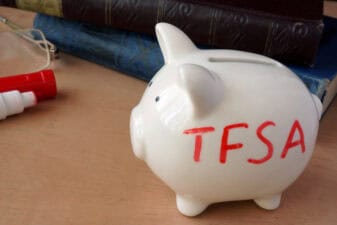Exchange-traded funds (ETFs) in Canada recently broke through the $100 billion mark in assets under management. And with more than 400 ETFs trading on the Toronto Stock Exchange, it’s getting a lot harder for self-directed investors to build consistent, easy-to-maintain portfolios without a bit of outside help.
In the early days, it was simple enough: the classic “Couch Potato” ETF portfolio would have consisted of about four broad-based, low-cost ETFs. Typically, this would be comprised of 20% Canadian equities, 20% U.S. equities, 20% EAFE/emerging markets, and 40% in a domestic bond ETF. Those would probably come from one or two mainstream vendors, typically BlackRock Canada (iShares) or Vanguard Canada.
In fact, one of the first Canadian robo-advisors, NestWealth.com, builds portfolios consisting almost entirely of funds from those two particular firms. But with the rise of multi-factor or “rules-based” funds—and, in particular, low-volatility ETFs from firms like BMO ETFs—the ETF landscape in Canada is getting a lot harder to traverse. It’s little wonder that many investors turn to fee-based advisors who specialize in building ETF portfolios (PWL Capital being a typical but by no means the only example).
We continue to see new “second-generation” ETF start-ups, like Som Seif’s Purpose investments. Seif famously sold his first ETF company, Claymore Investments, to BlackRock. We’re also seeing the entry of more global-based giants like Powershares Canada and soon, WisdomTree, whose focus has been historically on dividends.
Meanwhile, some domestic ETF start-ups such as First Asset have been acquired by mutual fund companies (CI Financial late in 2015); on the other hand, former Canadian mutual fund executives have created a new ETF company called Sphere ETFs.
Then there is the inevitable entry of the Canadian banks. In the 1980s, all of the major banks entered the no-load mutual fund business, transforming the mutual fund industry through the sheer power of their branch networks and ability to attract walk-in traffic.
Today, as ETFs encroach on the mutual funds’ turf, BMO ETFs is dominant among bank ETF players. However, Royal Bank’s tentative entry via fixed-income ETFs has been followed with a more serious offering of rules-based or “quant” equity ETFs.
Then, of course, there’s TD Bank, which was early in the ETF game in Canada between 2001 and 2006, only to famously withdraw, even while it enjoyed success with its popular low-cost index mutual funds, known as the e-Series funds. However, TD belatedly re-entered the mainstream ETF business early this year with an initial lineup of four ETFs. Ironically, the initial lineup strongly resembles the four-fund “Couch Potato” portfolio described at the top of this article.
But perhaps the biggest development this summer (on June 22) was the announcement that Vanguard Canada—popularly viewed as the kind of market-cap weighted, broadly diversified, low-cost, passive ETFs—surprised the market with the unveiling of four actively managed or factor-based ETFs.
The two that grabbed my attention were the Vanguard Global Minimum Volatility ETF (TSX:VVO) and the Vanguard Global Momentum Factor ETF (TSX:VMO). The other two were Global Value Factor (TSX:VVL) and Global Liquidity Factor ETF (TSX:VLQ).
While the company says these were its first actively managed ETFs sold in Canada, it also noted that its U.S. parent company, The Vanguard Group of Valley Forge, PA, has had a long track record with actively managed strategies. In fact, with almost US$1 trillion in global actively managed assets, it’s one of the world’s largest active managers.
The new “active” products are managed by Vanguard’s Quantitative Equity Group (QEG), which has existed since 1991. Each of the new ETFs will have a management fee of 0.35%. (Final MER may be slightly higher after fees and expenses.)
In fact, Vanguard itself acknowledged on its website (in a post by head of product Tim Huver) that “if seeing the words ‘Vanguard’ and ‘actively managed’ together makes you do a double take, it’s understandable. Having pioneered indexing for individual investors, we get a lot of attention for our index funds and ETFs.”
The landscape will only get more complicated for investors. Young people just getting started may be happy to pay 0.5% or so a year to delegate the decision-making to robo-advisors, aka automated online investing services. These can eliminate a lot of headaches—at least until the next serious bear market hits. Almost all “robos” use ETFs as their underlying investment products.
Alternatively, expect to pay 1-1.5% for a fee-based advisor to pick and monitor ETFs on your behalf. Or you can try the “Findependence Day” model that I personally use and continue to buy ETFs at a discount brokerage, but find a fee-for-service advisor who can give you a little guidance to validate your decisions.








